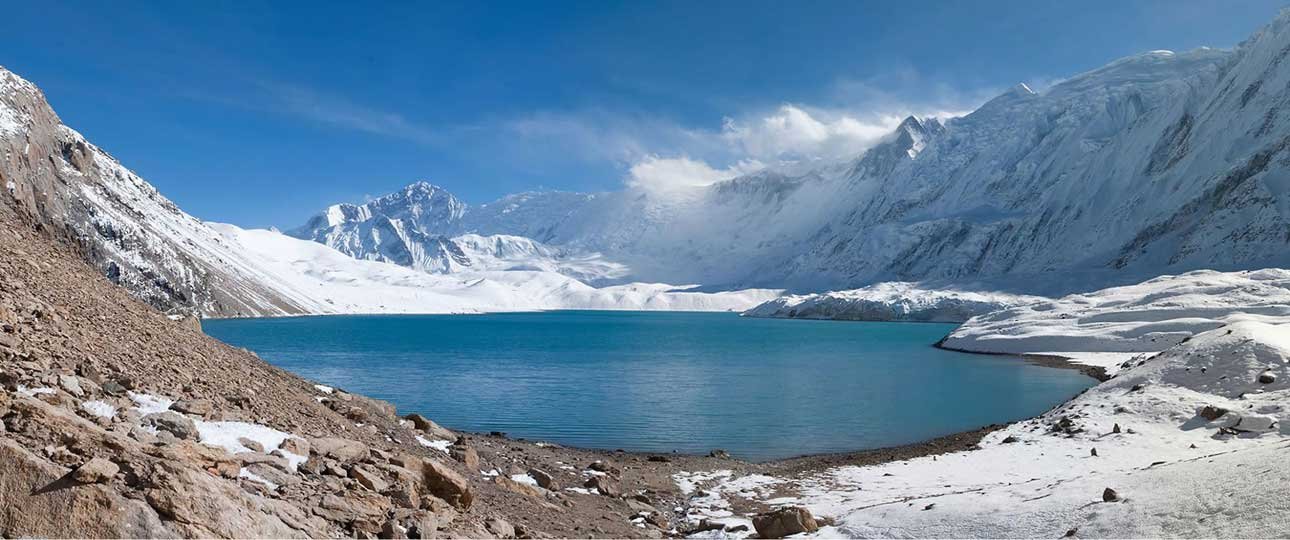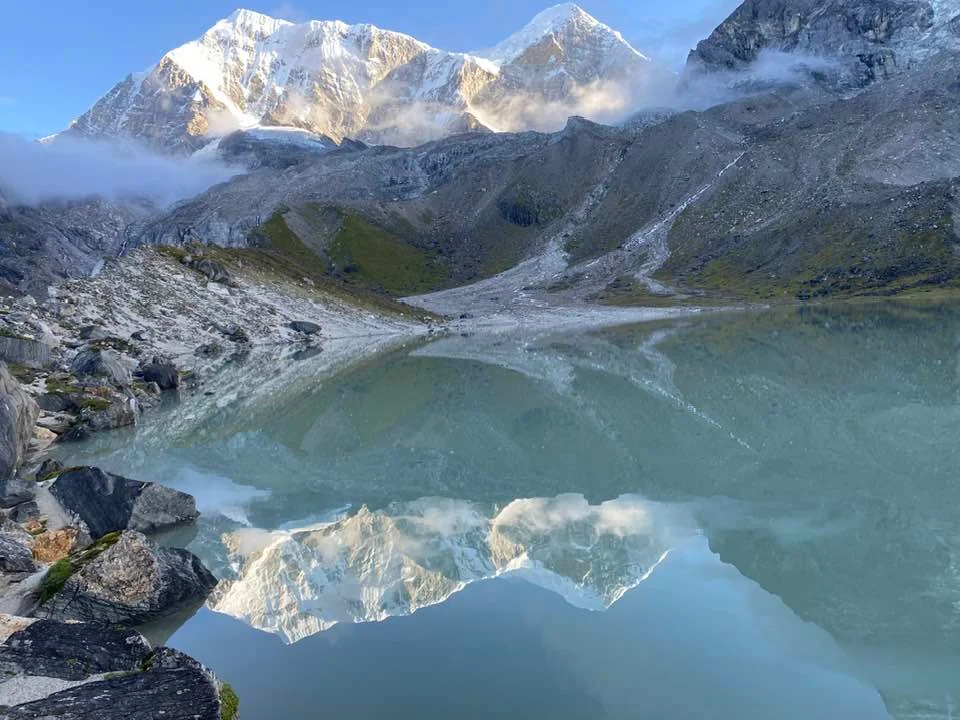Nepal is a land of towering peaks, serene valleys, and hidden trails that seem untouched by time. Among these treasures lies the Dudh Kunda Trek, a unique journey that blends adventure, spirituality, and culture into one unforgettable experience. Unlike the bustling routes of Everest Base Camp or Annapurna Circuit, this trek offers solitude, pristine nature, and a chance to witness the sacred Dudh Kunda Lake, nestled at the base of the majestic Mount Numbur (6,959m).

dudh kunda trek
Whether you are an avid trekker, a spiritual traveler, or someone seeking an offbeat adventure, the Dudh Kunda Trek promises an experience that is both soul-stirring and visually breathtaking.
Where is Dudh Kunda Trek Located?
The Dudh Kunda Trek is located in the Solu-Khumbu region of eastern Nepal. It begins from Phaplu, a small town accessible by a short domestic flight from Kathmandu. From here, trekkers traverse dense forests, serene rivers, and traditional Sherpa villages before reaching the sacred Dudh Kunda Lake, perched high in the Himalayas.
What makes this trek truly special is its combination of natural beauty and cultural richness. Along the way, you will encounter monasteries, ancient rituals, and the warm hospitality of Sherpa communities who have preserved their traditions for generations.

dudh kunda trek
Why Dudh Kunda Trek is Special
The Dudh Kunda Trek is not just another Himalayan trek—it’s a journey into Nepal’s heart and soul. Here’s why:
1. Sacred Dudh Kunda Lake
Dudh Kunda Lake is considered sacred by both Hindus and Buddhists. Pilgrims come here to perform rituals, and the lake is believed to have divine powers. Its milky-blue waters, surrounded by snow-capped peaks, create a mystical ambiance that is hard to forget.
2. Offbeat and Tranquil
Unlike popular treks crowded with tourists, the Dudh Kunda Trek offers solitude. You can enjoy the serenity of alpine meadows, listen to the chirping of birds, and experience nature undisturbed.
3. Cultural Immersion
The trek passes through Sherpa villages and monasteries, giving trekkers a chance to observe daily life, participate in festivals, and understand local traditions. This cultural immersion sets it apart from other treks that focus solely on scenery.
4. Spectacular Himalayan Views
From verdant forests to glacial valleys, the trek offers panoramic views of peaks like Mount Numbur, Kongde Ri, and other lesser-known mountains. Photographers and nature enthusiasts will find endless inspiration here.
How to Reach Dudh Kunda
Step 1: Flight to Phaplu
Most trekkers start with a domestic flight from Kathmandu to Phaplu, which takes about 35–40 minutes. The flight itself is an adventure, offering spectacular aerial views of the Himalayas.
Step 2: Trekking Access from Phaplu
From Phaplu, the trek begins on foot. The trail meanders through Sherpa villages, terraced fields, rivers, and lush forests, gradually gaining altitude. Trekking through these areas allows travelers to connect with nature and local culture in a way that few other treks offer.
Tip: Weather conditions can affect flights to Phaplu, so plan a buffer day in Kathmandu.
Dudh Kunda Trek Itinerary
Here’s a comprehensive 8-day itinerary to help you plan your adventure:
Day 1: Kathmandu to Phaplu
Fly from Kathmandu to Phaplu.
Short trek to a nearby village for acclimatization.
Overnight in local guesthouses.
Day 2: Phaplu to Shey
Trek through small Sherpa villages and terraced fields.
Enjoy scenic mountain and valley views.
Overnight stay in Shey.
Day 3: Shey to Yamphudin
Gradual ascent through forests and rivers.
Observe local farming and traditional lifestyles.
Overnight in Yamphudin.
Day 4: Yamphudin to Dudh Kunda Base
Enter alpine zones with snow-capped mountains in the distance.
Prepare for the final ascent to the lake.
Day 5: Dudh Kunda Lake
Reach Dudh Kunda Lake.
Witness pilgrims performing rituals.
Capture stunning photographs of the milky-blue lake surrounded by peaks.
Overnight camping near the lake (if permitted) or stay in teahouses.
Day 6: Exploration and Return
Spend the morning exploring the area around Dudh Kunda.
Start descending back to Yamphudin.
Overnight in the village.
Day 7: Yamphudin to Phaplu
Trek back through scenic valleys and villages.
Optional visit to nearby monasteries or cultural sites.
Overnight in Phaplu.
Day 8: Phaplu to Kathmandu
Fly back to Kathmandu.
Rest day or explore Kathmandu city for shopping and cultural experiences.
Best Time to Trek Dudh Kunda
Spring (March–May): Clear skies, blooming rhododendrons, and moderate temperatures.
Autumn (September–November): Stable weather, crisp air, and perfect visibility of Himalayan peaks.
Avoid Monsoon (June–August): Heavy rains make trails slippery.
Winter (December–February): Possible snow; suitable for experienced trekkers.
Trekking Tips for Dudh Kunda
Permits Required: TIMS (Trekkers’ Information Management System) and any local permits.
Physical Preparation: Moderate fitness is required; train with hikes and cardio.
Packing Essentials: Trekking shoes, warm clothing, rain gear, trekking poles, first-aid kit.
Accommodation: Teahouses or guesthouses along the route; pre-booking recommended during peak season.
Local Guides & Porters: Hiring local guides supports communities and enhances the experience.
Safety: Altitude sickness is rare but possible; acclimatize properly and stay hydrated.
Cultural Highlights
Sherpa Villages: Experience traditional homes, local cuisine, and warm hospitality.
Monasteries: Visit Buddhist monasteries and interact with monks to learn about their daily rituals.
Festivals: Depending on the time of year, you may witness local festivals like Mani Rimdu or Losar.
Adventure and Nature
The trek is not just about spirituality it’s also an adventurer’s dream.
Forest Trails: Walk through rhododendron forests, pine groves, and alpine meadows.
Wildlife: Spot Himalayan birds, monkeys, and possibly snow leopards in higher altitudes.
Photography: Capture sunrise over Mount Numbur, misty valleys, and reflections in Dudh Kunda Lake.
FAQs About Dudh Kunda Trek
1. How difficult is the Dudh Kunda Trek?
Moderate. Suitable for trekkers with some experience; the trek involves gradual elevation gain.
2. How long does it take?
Typically 7–9 days, depending on pace and side excursions.
3. Is it crowded?
No, it is an offbeat trek with very few tourists.
4. Do I need a guide?
Optional, but highly recommended for cultural insights and navigation.
5. What permits are needed?
TIMS and possibly local Solu permits.
6. Can families do this trek?
Yes, but children should be physically prepared and elders should go slow.
7. What should I pack?
Warm clothing, trekking shoes, rain gear, first aid, water, and snacks.
Why You Should Do Dudh Kunda Trek
Spiritual Experience: Witness sacred rituals at Dudh Kunda Lake.
Solitude and Peace: Escape crowded trails and enjoy nature in silence.
Cultural Immersion: Interact with Sherpa communities and explore monasteries.
Breathtaking Scenery: From alpine meadows to glacial lakes, every step is photogenic.
Unique Adventure: This trek is less commercialized, giving you a truly authentic Himalayan experience.
The Dudh Kunda Trek is an unforgettable journey that blends adventure, spirituality, and cultural richness. It offers a rare glimpse into the serene beauty of eastern Nepal, far from the crowds of popular trekking routes. Whether you are a solo trekker, a cultural enthusiast, or someone seeking peace amidst the Himalayas, this trek will leave you with lasting memories.
So pack your gear, prepare for an adventure of a lifetime, and explore the hidden gem of Dudh Kunda Trek where nature, culture, and spirituality come together in perfect harmony.

